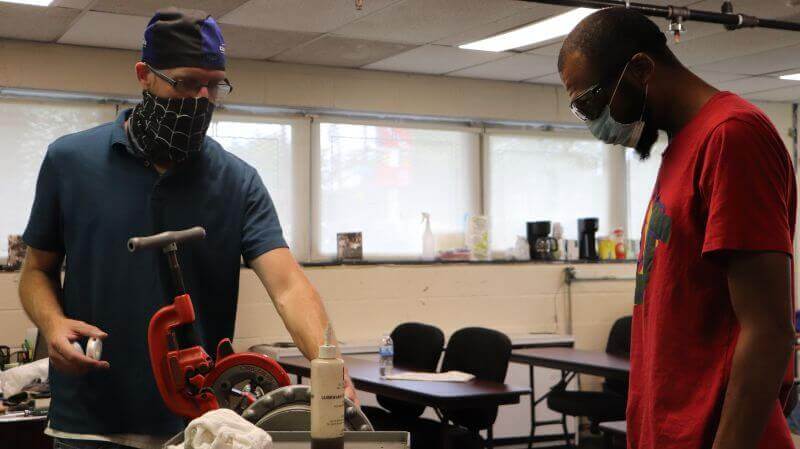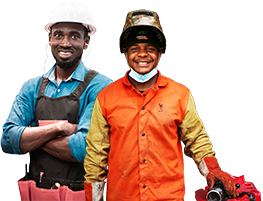Steamfitters and plumbing are known as plumbing technicians who install, maintain, and build plumbing systems. Although they share many responsibilities, there is a big difference between the two. If you want to be a steam-fitter or a pipefitter, you may want to learn what they do in plumber schools and how they differ. The article below explores what steam-fitters and pipefitters are, what they do, and how they compare to specific selection tips for plumber schools.
Steam-fitter is that group of plumber class who take proper pipe training from the best plumbing schools of the pipeline. These degree programs focus on repairing and maintaining special piping and high-pressure plumbing systems.
Steamfitters often work with other construction professionals to design and build internal structures or systems that transport and store high-energy substances such as acids, smoke, and certain hazardous chemicals.
Their plumbing work can be pretty unusual during the week, which usually takes more than 40 hours. Their work environment can be high, bright, and exposed to harmful substances, animals, insects, and dirt.
These are some of the day-to-day operations of steam employees, depending on their knowledge and skill level:
Steamfitter pipes are designed to transport high-pressure materials and certain chemicals, and steamfitters may need to use special tools to cut and insert them for repair.
When designing steam or hazardous plumbing systems; building materials, steam-fitter pays more attention to additional safety measures. Thanks to good pipe fitting training, a pipe fitter knows how to deal with harmful situations.
Ensuring that all systems operate within a safe pressure level is essential for safety and observation. Steam-fitter uses special gauges and other tools to measure pressure.
Steamfitters perform system maintenance by identifying and installing obsolete items or resolving issues.
Familiarize yourself with chemical safety and safety by wearing appropriate protective equipment such as gloves and goggles. Steamfitters can follow safety guidelines that they learned in plumber schools and apply chemical and hazardous chemicals.
After installing plumbing systems, steam-fitter may provide safety education to those using the system or working inside the building.
A pipefitter is a plumbing technician who works hard to manage, install and maintain pipes. The plumbers usually work with construction workers when building new industrial or residential projects but can also visit homes to repair when new plumbing or systems are needed. In addition, pipefitters may work with other plumbing schools or construction technicians when controlling high-pressure objects.

A pipeline can design water systems within residential, commercial, or industrial buildings to increase space and reduce leaks.
According to the drawings, a pipefitter builds new areas, replaces systems, and cuts existing pipes. He then inserts these cut pipes to connect and install them. Plumber schools teach you everything about every process involved in pipefitting.
A master plumber ensures that the pipes do not open or burst. Plus, they check the quality and durability of the pipes and their connection.
Pipelines can provide suggestions or solutions to old or slow piping systems and ways to prevent leaks and inefficiencies of pressure or delivery.
Plumber schools differentiate steamfitters and pipefitters based on the typical responsibilities and tasks that they perform. The main difference between steamfitters and pipefitters is the content of the pipes they carry—a pipe by plumber class specializing in plumbing and general plumbing design.
Steamfitters are special pipes and perform many of the same functions, but they do so with pipes that otherwise deliver highly compressed or hazardous materials. Pipefitters may potentially work with water or other less dangerous substances, while steamfitters may be chemically or steam-based.
To become a plumber or steam driver, you must have a high school diploma or equivalent from relevant colleges and universities. Most companies that hire pipefitters and steamfitters require them to complete a plumbing trade school or technical college before starting work. To be a steam driver, you have to deal with dangerous handling.
Steamfitters and plumbing should have many similar skills, including strength and flexibility. Physical strength and power are also crucial for walking, cutting, and placing heavy pipes. Many tools, such as knives and saws, are heavy and difficult to use, requiring many hands and arm strength. Because steamfitters work with dynamic materials, it is essential to be careful and robust in problem-solving.
As soon as a transporter or pipefitter attends a business school or community college, they often complete pipe fitting training or studies to improve their skills. They work with established plumbing professionals during this period to build their skills and learn more about art. The microphone can create interest in working with piped pipes and hazardous materials, which may require further pipe fitting training before working independently on an experienced steam engineer.
Plumbing programs provide hands-on training that helps pipefitters do well in the future. They also offer job placement and financial aid to those in need.
There are many labels for pipefitter or steamfitter. Both steamfitters and pipefitters start apprenticeships for plumbing.
The respective post office promotes a plumber after four years of working in their post office. This promotion depends on the location and the state requirements. Such apprenticeships also make aspiring plumbers– licensed plumbers!
Pipefitting and steam fitting are well-defined careers and will grow by 15% from 2020 to 2040. In addition, our students who pursued Steam, Sprinkler, and Pipefitting programs are currently earning ample money. The counties where they work comprise Pennsauken, NJ; Collingswood, NJ; Yeadon, PA; Cherry Hill, NJ and Ardmore, PA.
In conclusion, now is the most suitable time to start your plumbing course with accurate trade schools plumbing. Plus, PTTI is one of the esteemed institutes for each tradesperson because of its quality education. Therefore, you must schedule your plumber class with us as soon as possible.
Read More:
Discover pipefitting possibilities at PTTI.Discover Program

Discover Endless Possibilities with pipefitting program at PTTI.
